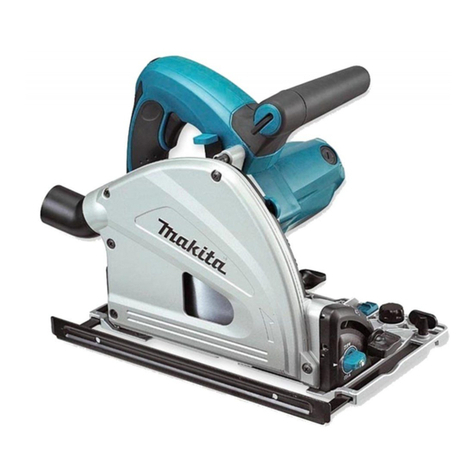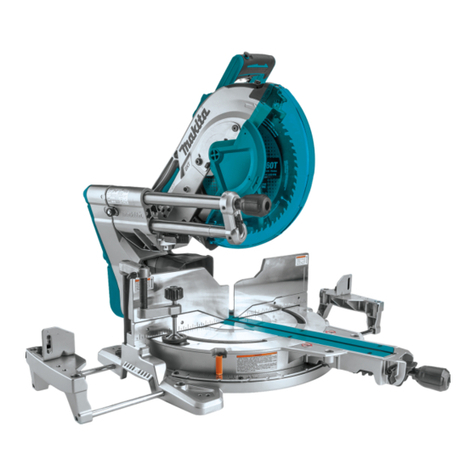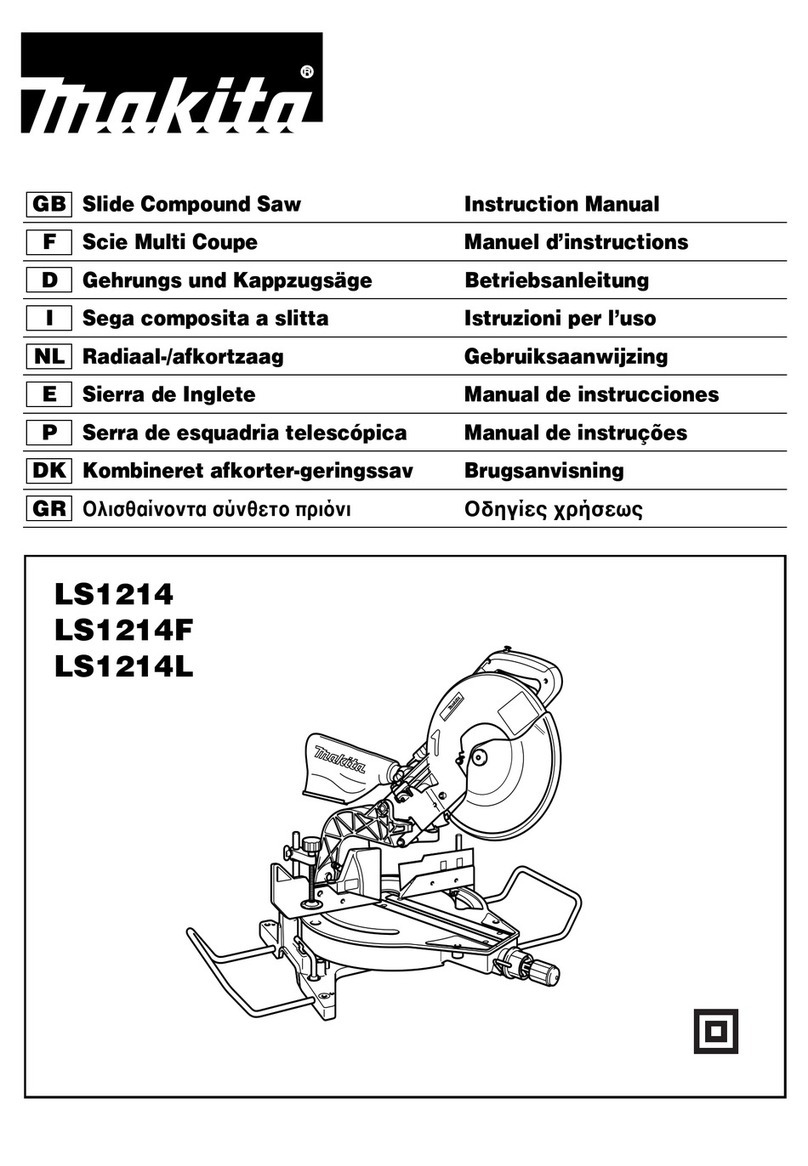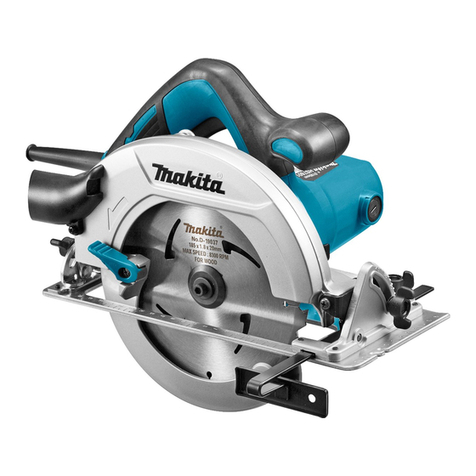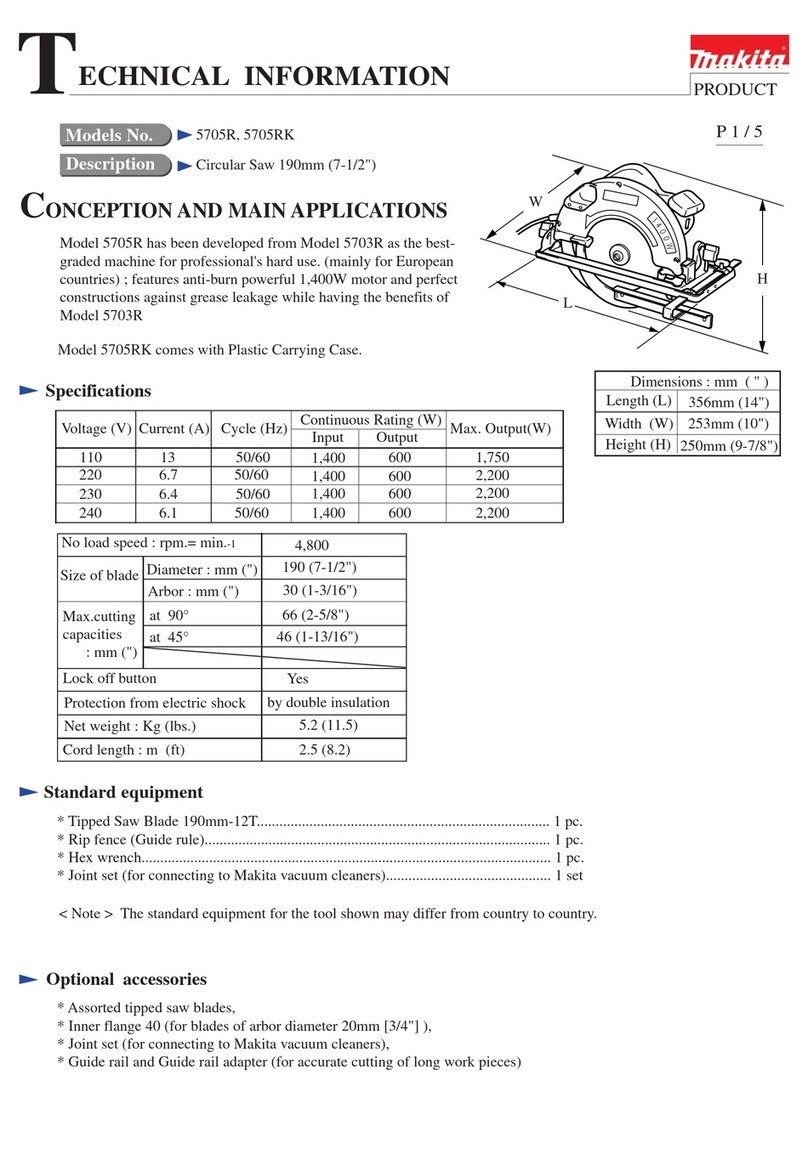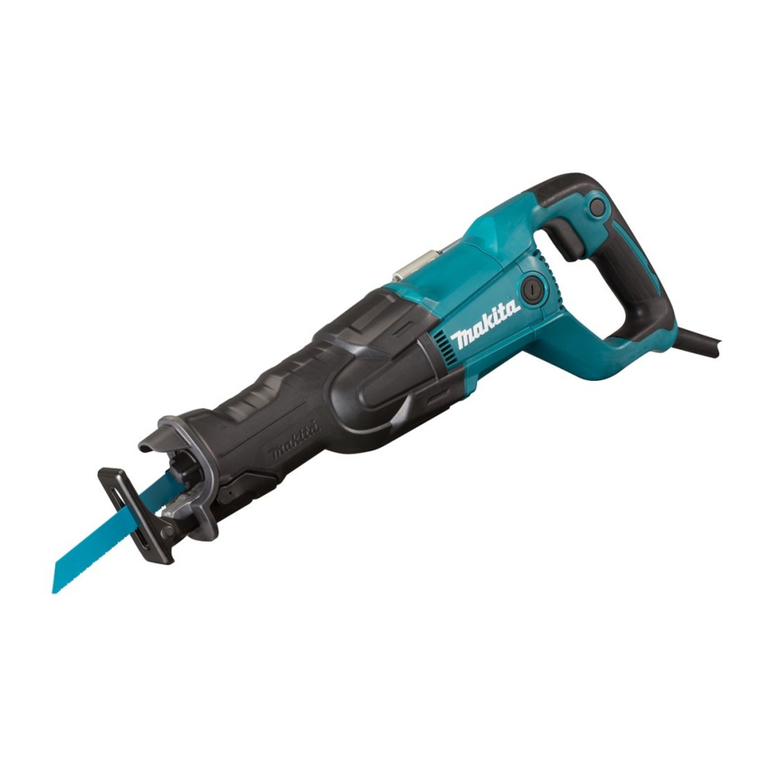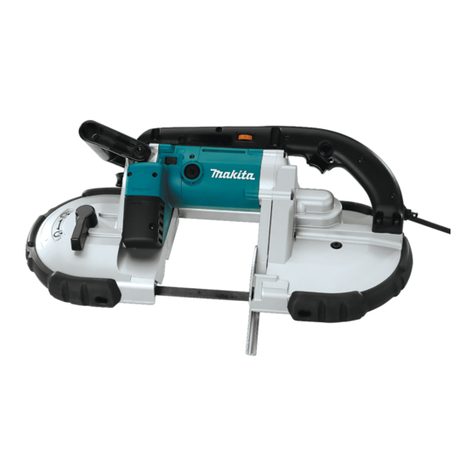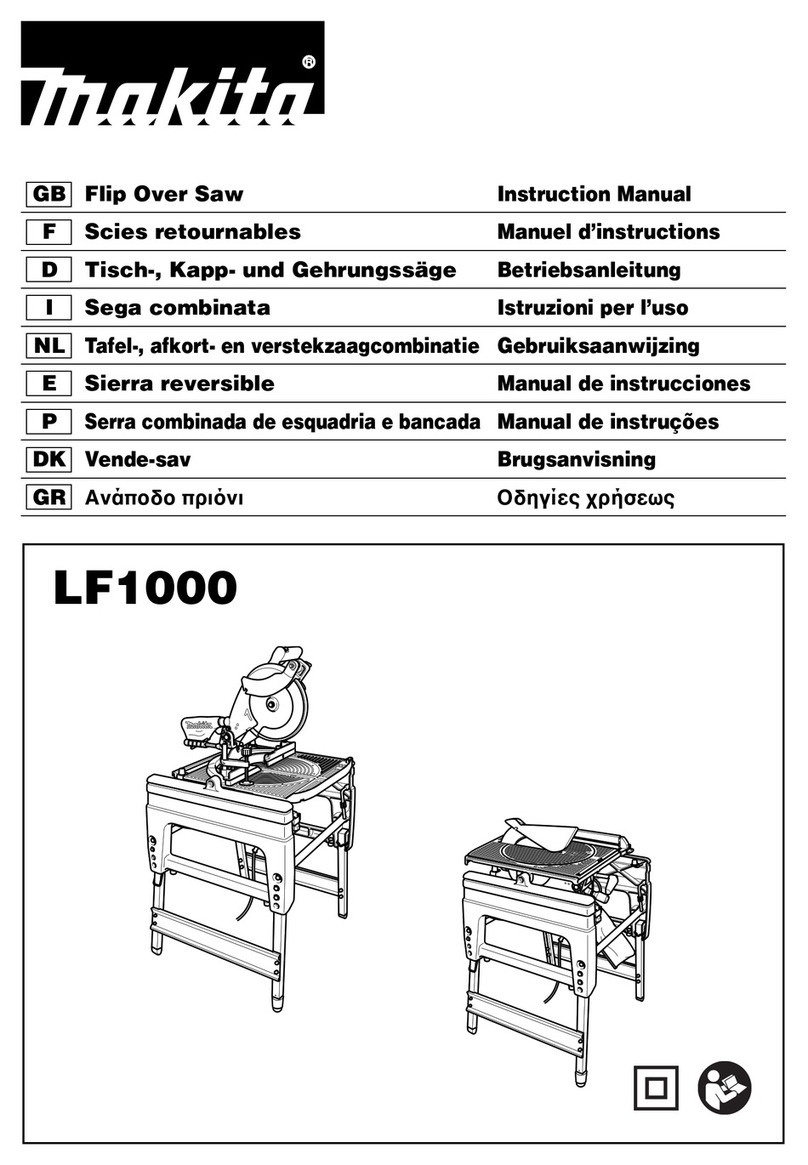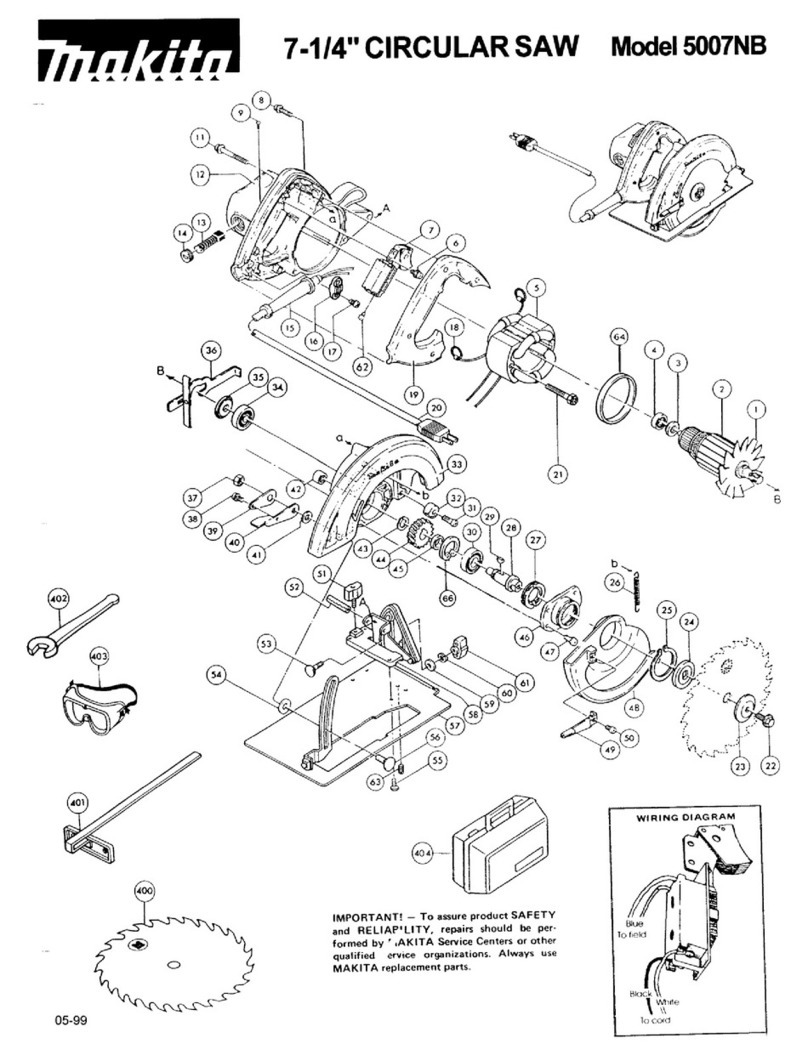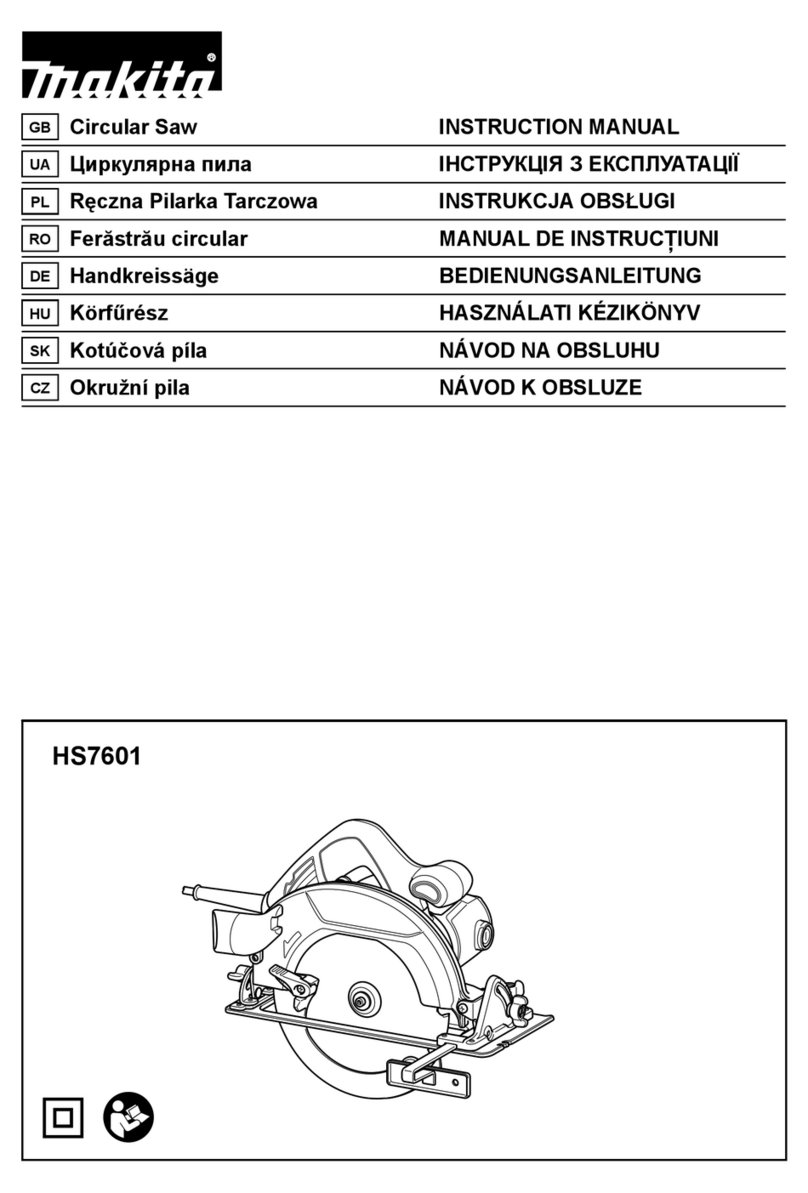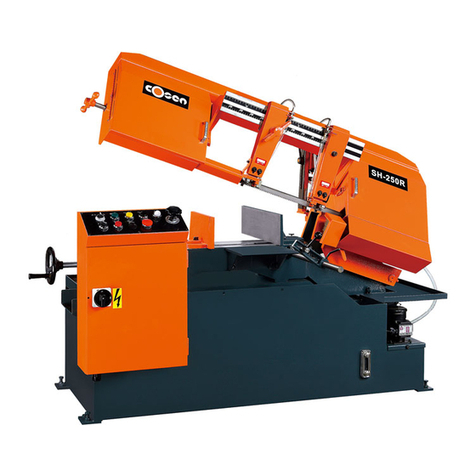Specific Safety Rules
1.
DANGER! Keep hands away from cuttingarea and blade. Keep your second
hand on auxiliary handle, or motor housing. If both hands are holding the
saw, they cannot be cut by the blade.
Keep your body positioned to either side of the saw blade, but not
in
line
withthe saw blade. KICKBACKcould cause the sawtojump backwards. (See
"Causes and Operator Prevention of Kickback")
Do
not reach underneath the work while blade is rotating. The guard can
not protect
you
from the blade below the work. Don't attempt to remove cut
material when blade is moving.
CAUTION: Blades coast after turn off.
2.
Check lower guard for proper closing before each use.
Do
not operate saw
if lower guard does not move freely and close instantly. Never clamp or tie
the lower guard intothe open position. If saw is accidentally dropped, lower
guard may be bent. Raisethe lower guard withthe Retracting Handleand make
sure
it
moves freely and does nottouchthe blade or any other part, inall angles
and depths of cut.
3.
Check the operation and condition of
the
lower guard spring. If the guard
andthe spring are notoperating properly, they must be serviced before use.
Lower guard may operate sluggishly due to damaged parts gummy deposits,
or a buildup of debris.
4.
Lower guard should be retracted manually only for special cuts such as
"Pocket Cuts" and "Compound Cuts." Raise lower guard by Retracting
Handle. As soonas blade enters the material, lower guard mustbe released.
For all other sawing, the lower guard should operate automatically.
5.
Always observe that the lower guard is covering the blade before placing
saw down on bench or floor. An unprotected, coasting blade
will
cause the
saw to walk backwards, cutting whatever is inits path. Be aware of the time
it
takes for the blade to stop after switch is released.
6.
NEVER holdpiece being cut
in
your hands or across your leg. It is important
to support the work properly to minimize body exposure, blade binding, or
loss
of control.
7.
Holdtoolby insulatedgripping surfaces when performing anoperationwhere
the cutting tool may contact hidden wiring or its own cord. Contact with
a "live" wire
will
also make exposed metalparts
of
thetool "live" and shock
the operator.
8.
When ripping always use a rip fence or straight edge guide. This improves
the accuracy of cut and reduces the chance for blade binding.
9.
Always use blades with correct size and shape (diamondvs. round) arbor
holes. Blades that do not match the mounting hardware of the saw
will
run
eccentrically, causing
loss
of control.
IO.
Never use damaged or incorrect blade washers or bolts. The blade washers
and boltwere specially designed for your saw, for optimum performance and
safety or operation.
4



